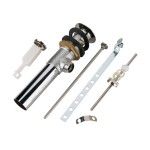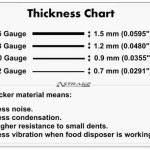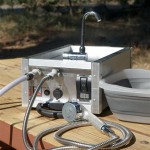Who To Call About a Sinking Yard
A sinking yard can be a disconcerting discovery for any homeowner. It manifests as noticeable depressions or gradual sloping in the lawn, often accompanied by standing water after rainfall. Understanding the potential causes and knowing who to contact for assessment and repair is crucial for addressing this issue effectively.
Understanding the Causes of a Sinking Yard
Several factors can contribute to a sinking yard. One common culprit is the decomposition of organic matter. Buried tree stumps, old construction debris, or even improperly filled-in pools can decompose over time, creating voids beneath the surface. As the organic material breaks down, the soil above it settles, leading to a sinking effect.
Another potential cause is soil erosion. Heavy rainfall can wash away loose topsoil, particularly on slopes or in areas with poor drainage. Over time, this erosion can create depressions in the yard. Improperly installed or damaged underground utilities, such as sewer lines or water pipes, can also lead to soil settlement and sinking.
Finally, changes in the water table can impact yard stability. Periods of drought can cause the soil to dry out and compact, leading to settling. Conversely, excessive rainfall can saturate the soil, making it more susceptible to erosion and compaction.
Identifying the Right Professionals
Determining the appropriate professional to contact depends on the suspected cause of the sinking. For suspected buried debris or improperly filled areas, an excavation contractor is the best starting point. These professionals have the equipment and expertise to excavate the area, remove the debris, and properly backfill the void with suitable material to prevent future settling.
If soil erosion or drainage issues are suspected, a landscaping contractor or a grading and drainage specialist can be helpful. Landscapers can assess the overall drainage patterns of the yard and recommend solutions such as installing French drains, re-grading the slope, or adding retaining walls to prevent further erosion.
For suspected issues with underground utilities, contacting the relevant utility company is the first step. They can inspect their lines for leaks or damage and perform necessary repairs. If the utility company determines their lines are not the cause, a geotechnical engineer may be needed to assess the soil stability and underlying conditions.
Gathering Information Before Making the Call
Before contacting any professional, gathering as much information as possible about the sinking yard is beneficial. Note the location and approximate size of the sunken area. Take photographs to document the issue. Consider the history of the property, such as previous construction or landscaping work. This information will help the professional understand the situation and provide more accurate assessments and solutions.
It's also advisable to obtain multiple quotes from different contractors. This allows for comparison of services, pricing, and proposed solutions. Don't hesitate to ask questions about their experience, licensing, and insurance. A reputable contractor will be transparent and willing to provide references.
Addressing Drainage Concerns
Proper drainage is essential for preventing future sinking issues. Ensure that gutters and downspouts are directing water away from the house and foundation. Consider installing extensions to downspouts to carry water further away from the property. Addressing drainage problems proactively can help maintain the stability of the yard and prevent further sinking.
Grading the yard to create a gentle slope away from the house can also improve drainage. This can be achieved by adding or removing soil in specific areas. Landscaping features, such as swales or dry creek beds, can be incorporated to redirect water flow and prevent pooling.
Regular Yard Maintenance
Regular yard maintenance plays a crucial role in preventing sinking issues. Aerating the lawn periodically can improve soil compaction and allow for better water infiltration. This helps prevent the soil from becoming overly saturated and susceptible to erosion. Overseeding can also help establish a dense root system that helps hold the soil in place.
Avoid excessive watering, which can saturate the soil and contribute to sinking. Water deeply and less frequently to encourage deep root growth. Regularly inspect the yard for any signs of erosion or settling and address them promptly to prevent minor issues from becoming major problems.

Contact 9 Sinking Yard
Backyard Soil Sinking Diy Home Improvement Forum

Settlement Vs Sinking Key Differences By Allied Foundation

Common Signs Of A Sinking Foundation

What Is A Sinkhole Scary Threat That S Rare But All Too Real

Sinking A Garden Deborah Silver Co

6 Sinking Foundation Signs And What To Do Next Angi

Common Signs Of A Sinking Foundation

Why Is My Concrete Sinking Family Waterproofing

5 Reasons To Repair Not Replace Your Sinking Concrete Foundation In Or And Wa Terrafirma







